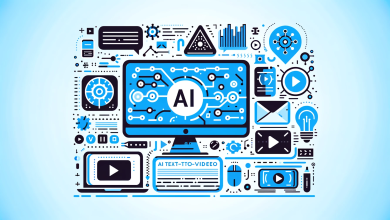
Today, people and organisations often use the terms AI and Machine Learning (ML) so interchangeably that it is difficult to discern where one begins and the other ends. And while AI and ML are synonymous with each other, it’s important to recognise that these technological cousins are not the same thing.
AI is a branch of computer science tasked with building machines capable of intelligent behaviour, while the team at Stanford University in California define ML as; “the science of getting computers to act without being explicitly programmed”. While there will always be a need for AI researchers to build smart machines, it is the ML experts that make these machines truly intelligent – that being said, it’s easy to see the ambiguity between the two!
How does ML fit in with AI within the supply chain?
If AI is essentially the intelligence, ML is the implementation of the computer methods that support it. ML is the workhorse and enabler of AI through its algorithms which provide systems with the ability to automatically learn and improve from experience without being explicitly programmed.
Once we can recognise the difference between the two terms, you can apply both AI and ML to a number of highly complex processes (including TMS, WMS, and even omnichannel scenarios) present in modern supply chains.
When we’re considering the application of ML to supply chains and the primary building blocks of this applied supply chain science, there are three parameters that underpin work in this field.
1. Supervised learning is an important aspect of ML for predicting things when data and features are clear. The ‘supervision’ aspect of it comes from knowing the data and the aim.
In the context of supply chains, a retailer could use supervised learning to more accurately predict peak season shopping trends through the use of historical customer and website traffic data, and even potentially recent social listening and weather forecast data – this, in turn, can help retailers to more effectively fine tune their omni-inventory strategy around peak times.
2. Unsupervised learning is used to look for groupings, patterns, or relationships within data, especially when we have little to no real idea of what we are looking for.
Consider this, there is no denying that the number of promotional events has increased tenfold, and it is more difficult than ever before to predict the impact each promotional campaign will have on demand. Having access to this type of performance insight is crucial to growing profitably, but it is not easy to get it.
3. Reinforcement learning is where you have little or no data but have an environment to interact with.
For example, a robot arm or cobot involves learning about the size, speed and weight of different items to become more efficient in its picking patterns.
Through the process of analysing large amounts of data, ML can help to solve or improve solutions to key challenges within supply chains that are often simply too large or complex to mathematically model accurately, or to code precisely.
Just like you wouldn’t use a hammer to drive a screw, the same principle applies to data science tools as well. ML is a great development, but it’s important to be aware that there are many types of analytical problems to solve across such complicated and fluid environments as the supply chain, each one requiring a specialized scientific and approach to reach the best solution.
Applied machine learning is already a powerful tool and will become increasingly important over the course of the decade as we continue to need technology that can listen, learn and adapt on its own.
Conclusion
It is important to recognise that AI and ML are not a panacea for every analytical or technological challenge facing businesses today. However, it is worth noting the considerable benefits both disciplines are already bringing to modern-day supply chain environments.
Whether it’s protecting your workforce, streamlining your supply chain networks, keeping your brand promise to end-customers, helping your business to be more environmentally aware and sustainable, or simply helping to improve bottom-line profits, AI and ML can help and they’re here to stay, so surely now is the time to ask yourself: ‘are we machine ready?’



